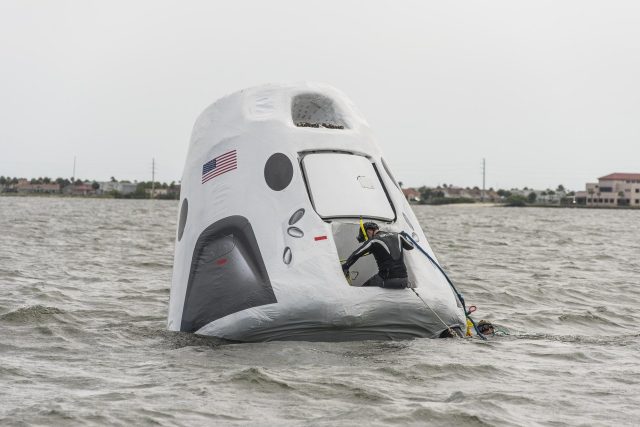AirDrop Proved Handy on NASA’s Demo-2 Mission
On 2 August 2020, NASA’s Demo-2 mission completed successfully when the SpaceX Crew Dragon capsule carrying astronauts Bob Behnken and Doug Hurley safely splashed down in the Gulf of Mexico. But the crew had a few IT problems to resolve before that happened.

The Crew Dragon is a thoroughly modern space capsule with touchscreen controls and documentation stored on iPads (the astronauts wear special gloves that work with touch screens). But at one point, the SpaceX timeline app flaked out on Behnken’s iPad. As a backup, SpaceX had Hurley take screenshots of his timeline and send them to Behnken using AirDrop.
While this (thankfully) wasn’t an Apollo 13-level malfunction, it goes to show how useful some core Apple features we take for granted can be. Surprisingly, Google only recently added a similar capability called Nearby Share to its Android mobile operating system.
iPads and other tablets have been in use on ISS for many years but I don’t think they have been used for critical functions like this incident.
I wonder if NASA has been monitoring the reliability of these devices in the harsh conditions of space? I hate to think how bulky and expensive a “space hardened” device would be…
http://users.tpg.com.au/users/mpaine/photon.html
The ISS is in low Earth orbit, so I doubt the risk is that much more than the risk in a typical airliner flying across an ocean or a continent. The ISS doesn’t have the protection of Earth’s atmosphere, but It’s still well within the Earth’s magnetic field. Once you leave the protection of Earth’s magnetosphere, then you do have to worry. Manned Mars missions are going to have to deal with radiation risk.
From what I’ve read, they seem to be doing well. iPads are used not just for flight management, but to monitor astronaut health:
There’s an app the astronauts use to test fine motor skills:
https://www.nasa.gov/feature/one-year-mission-investigators-debut-preliminary-results-at-nasa-workshop
And a Food Intake Tracker:
NASA even deploys iPads in the deepest depths of the sea floor to train and monitor motor astronaut’s skills and cognition: